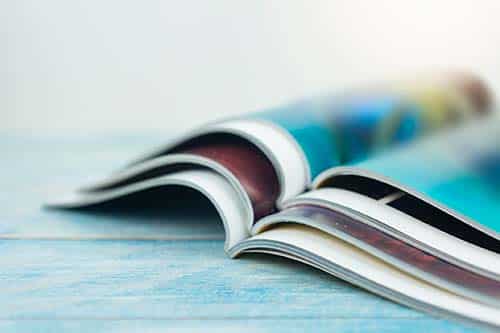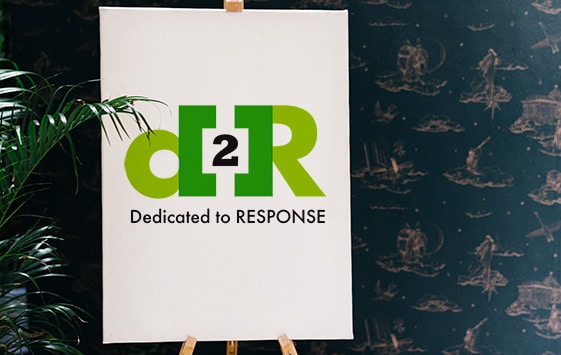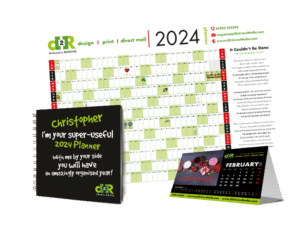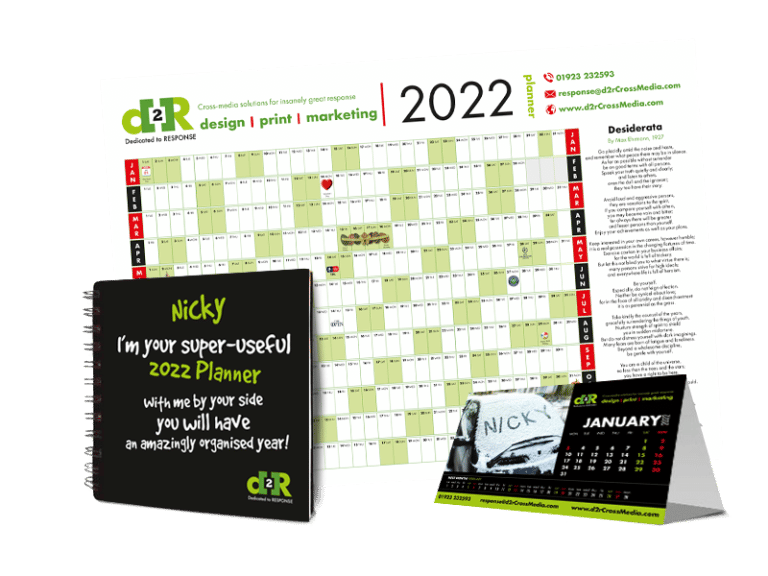A book without any binding isn’t a book at all. It’s a pile of sheets. Some could argue it could be a Kindle or other brand of eBook, but that’s a different situation altogether.
But a booklet can be the best way to convey information to your market. If you have a technical manual, a product brochure, or a programme for a training course, one of the things you’ll have to consider is what are the different kinds of book binding? And which is most suitable for you?
Staple Bound
Our most popular booklet option, the cover and inside sheets are stapled together in two places at the spine. The collected sheets are then folded in half, rolled flat and the excess paper front edge trimmed for a clean finish. This is also known as ‘saddle stitched’, the name coming from the saddle shape of the machine the sheets would be placed on. The covers can be the same paper as the inside sheets, or something different to stand out and add a touch more of a robust feel.
At D2R, we can also offer a ‘square backed’ booklet. This is when the spine is pressed at a right angle, for a neat flat edge. This can make any stapled booklet resemble a more professional perfect bound booklet.
Programmes, order of service booklets, product catalogues, church pamphlets and menus are all examples of staple bound booklets.
Perfect Bound
The perfect bound booklet has a flat square spine (just like our square backed booklets mentioned above), where the pages have been bound into with an adhesive. Because this process involves glue, there will be a longer turnaround time to include the drying process.
The covers are heavier stock than the inside pages, even being as thick as card if needed.
Examples include paperback books, glossy magazines, and more often corporate brochures.

Wire Bound
Holes are punched along the edge of the page, and then the collected sheets have a spine of wire loops inserted. The loops are closed (or ‘crushed’ for a more exciting term). At D2R, we add a clear acetate sheet to the front to protect the print, and add a 350gsm card back if no back cover has been provided.
You will find wire binding used in note books, diaries, home recipe books and technical manuals.
These wire bound booklets have become a more popular choice for presentation materials, as the sheets can be rotated around the spine and the whole booklet can lay flat. If the booklet only has a few pages, a heavier stock can be used to give it more weight, so no one looks at it and thinks it should have just been stapled together.

Comb Bound
Very similar to wire bound booklets, for comb binding, holes are punched along the edge of the page and held together with aplastic spine. These can still sit flat when opened on a desk, but unlike wire binding, they’re not as easy to fold over itself as the plastic spine is still a rigid strip.
A comb bound booklet has a benefit the rest do not; the spine can be removed for more pages to be added or taken away without tearing. This is done with a specific comb binding machine, but if you don’t usually have one of these in the back of your cupboard, it can be done with some care by hand. Or you can always bring it down to us at D2R.
Comb binding is a great option for manuals, legal documents, and even scripts.

Book Binding Tape
This tape is usually a tough strip of cloth and self adhesive that wraps around the spine or top edge of pages and trimmed to size. This option is the most utilitarian of all book binding in this article. Not suitable for presentation pieces, book binding tape is used on NCR invoice and estimate pads, delivery notes, and repairing the spines of hard back books.
Get in touch with us to get your quote at response@d2rCrossMedia.com or give us a call on 01923 601035. Our team are happy to talk about what the different kinds of book binding are and what will get the Response! your product needs.





